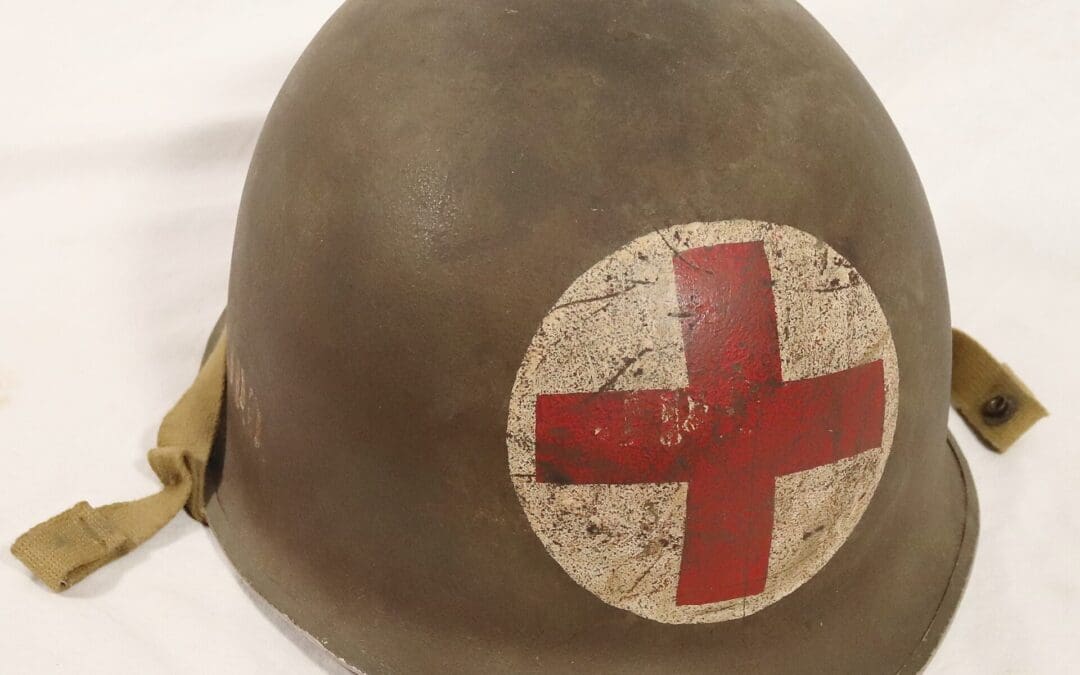
J.P.D. AIRBORNE Medic Helmet
This early Helmet shell has a heat lot number 58B, with a front seam and fixed bales. The most significant features are the snap tabs on the chin strap intended to secure the shell to the parachute helmet liner.

This early Helmet shell has a heat lot number 58B, with a front seam and fixed bales. The most significant features are the snap tabs on the chin strap intended to secure the shell to the parachute helmet liner.
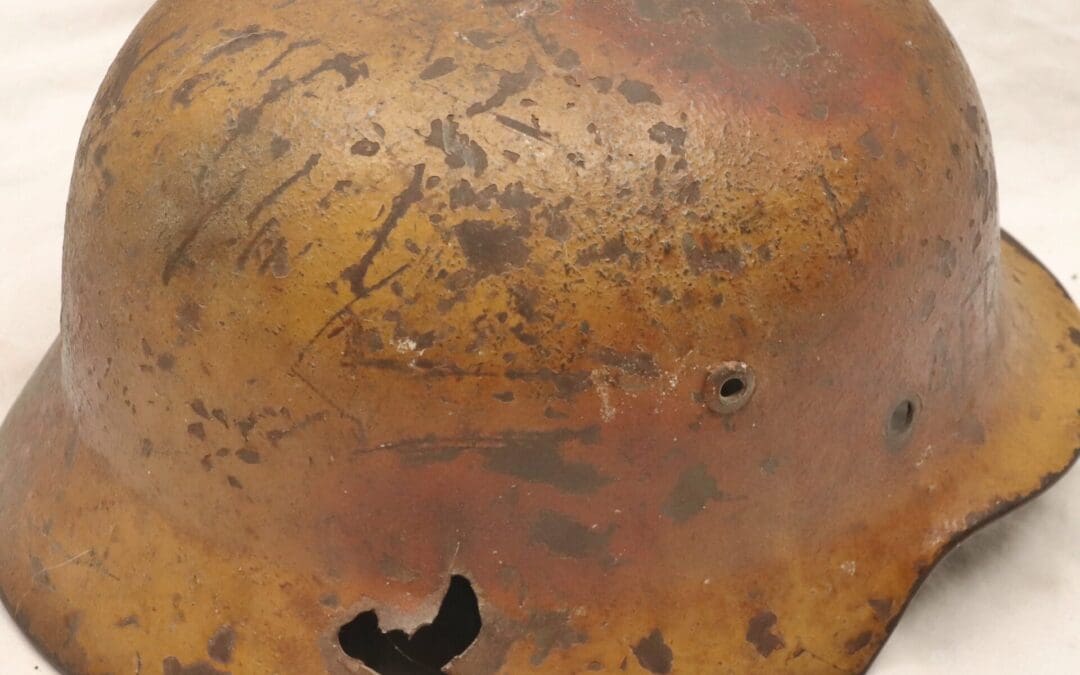
This German M-35, ET-66 size, No.4171, WW2 helmet shows a lightly overpainted Africa Korp decal. The paint Camo. colors are dark yellow green with spots of red applied randomly. The entrance hole is located near the decal and is smaller than
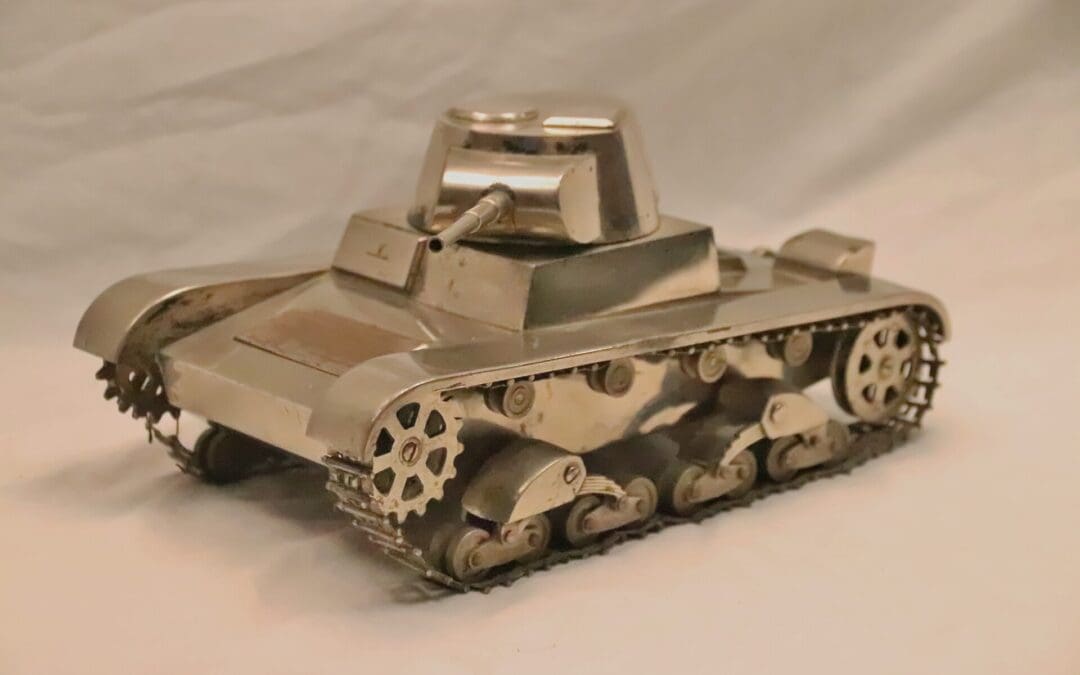
Shortly after occupation by German forces an armored vehicle repair facility was established in Riga, Latvia. A major focus was to recover, and repair captured enemy (Russian) tanks and return them to service with the German army.
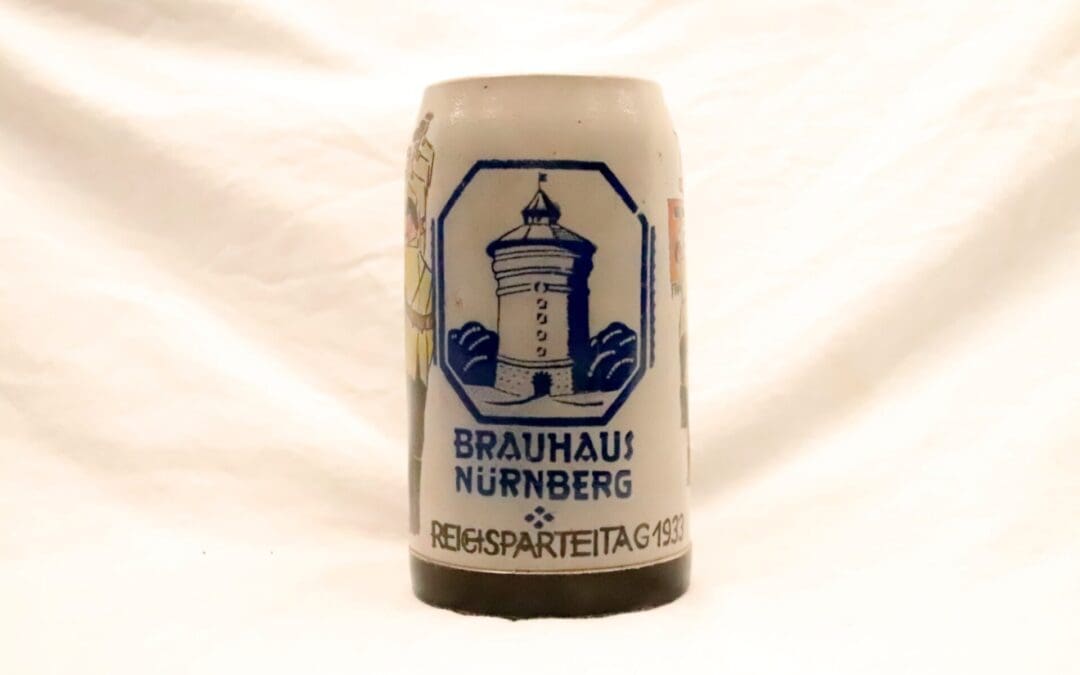
This stein was sold as a souvenir of the fifth party (Nazi) congress held in Nurenberg, 30 Aug – 3 Sept 1933. It was called the “Rally of Victory” (REICHSPSRTEITAG). It was a massive political rally celebrating the victory
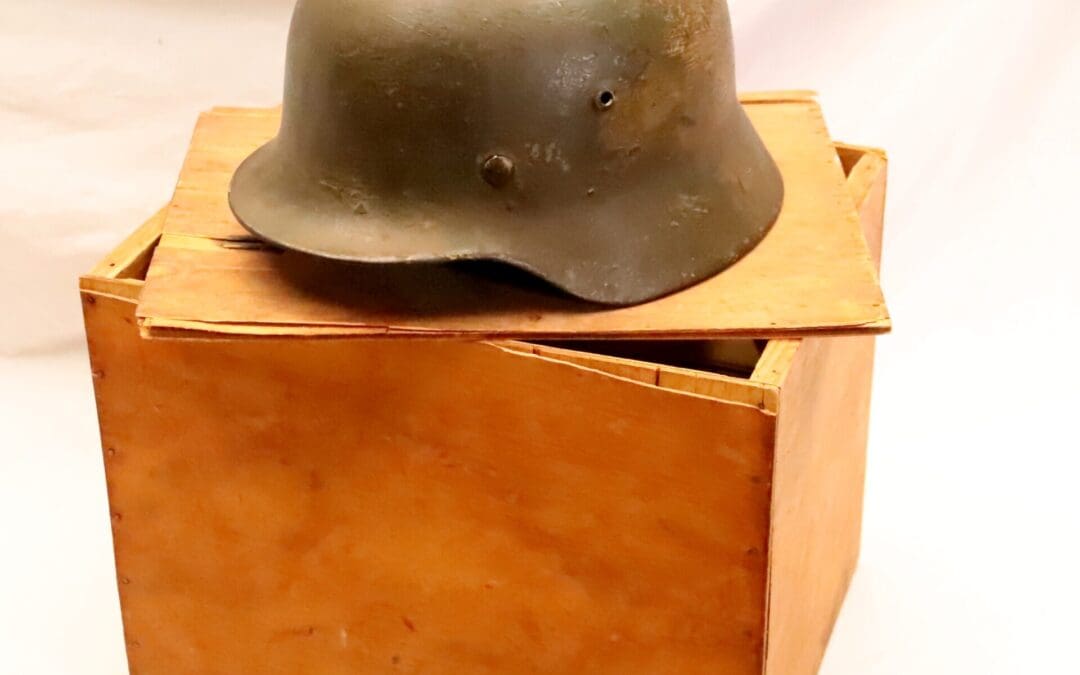
This WW2 German helmet was packed in a thin plywood box and sent home. The helmet was wrapped in a March 25, 1944, dated Stars and Stripes, Mediterranean Armed Forces newspaper for protection. It is addressed to Master Ned Reilley,
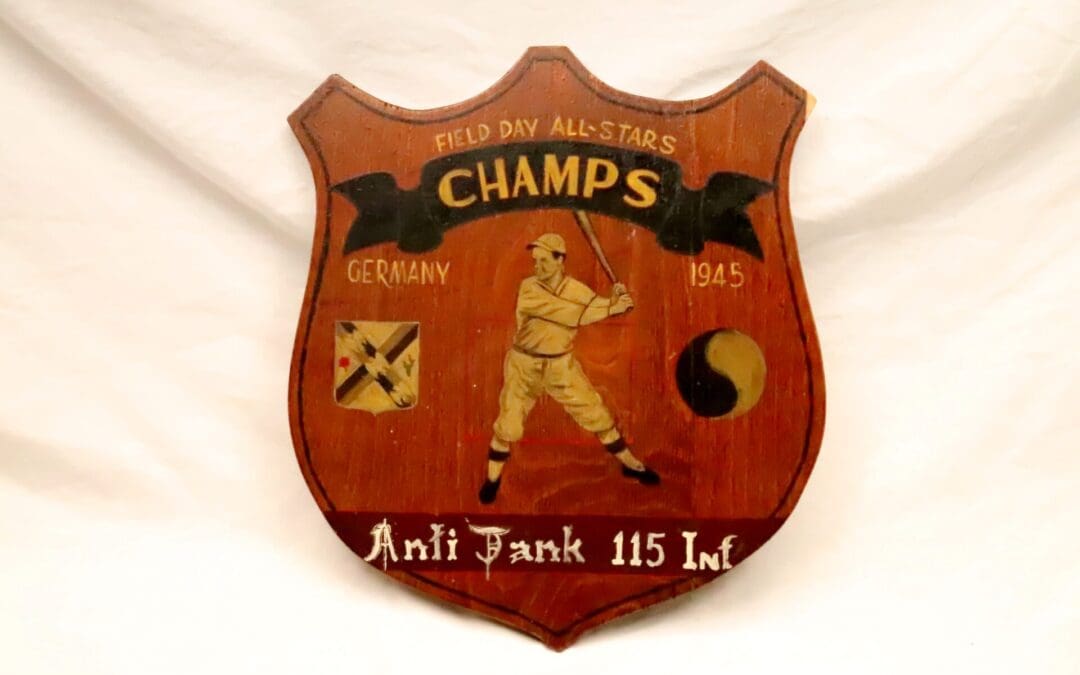
Germany surrendered on May 8, 1945, at which time approximately 4 million men found themselves happily un-employed and all wanted to return to the U,S, next Tuesday. Fortunately, the US Army Chief of Staff, General George C. Marshal had anticipated this. His experience with the demobilization of WWI